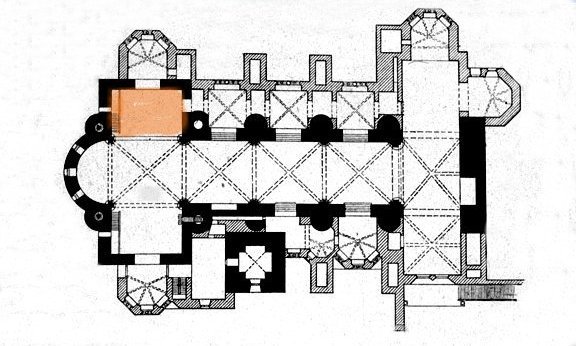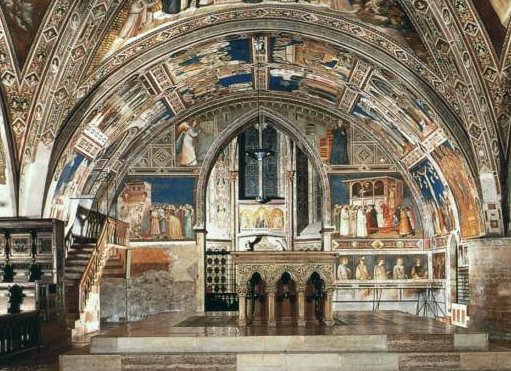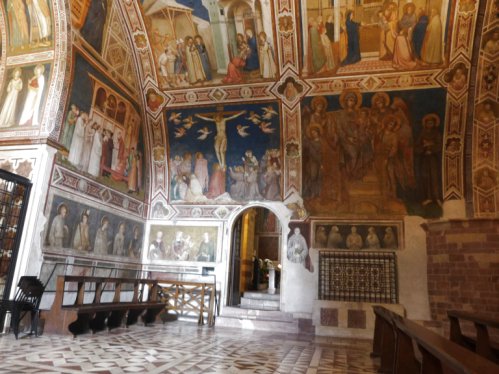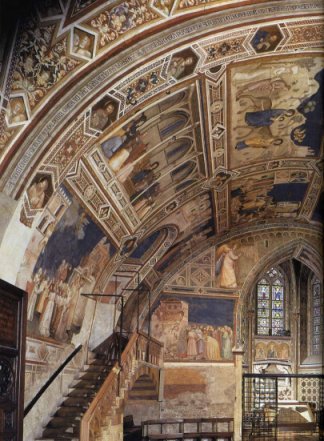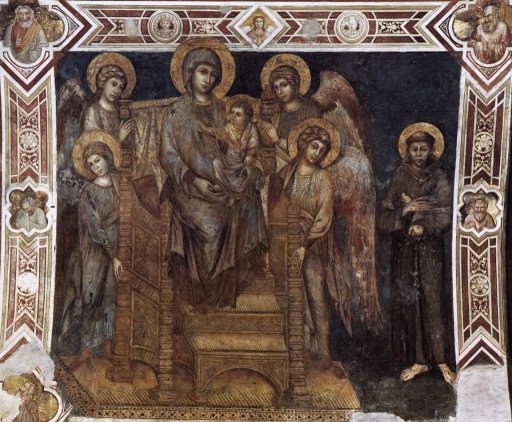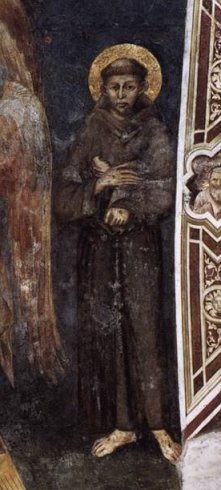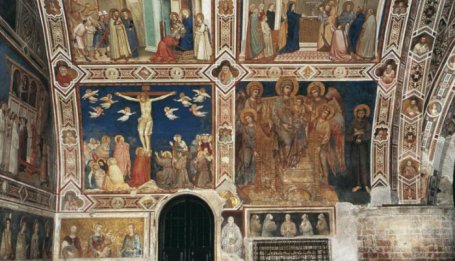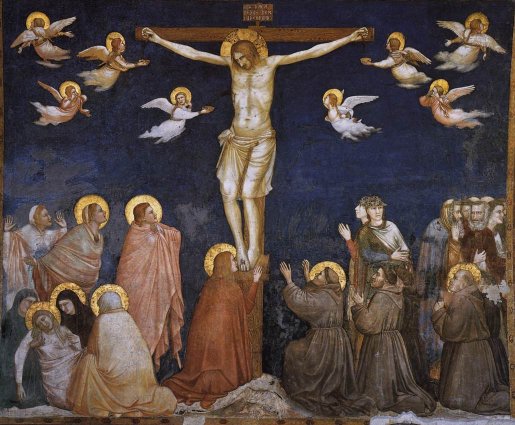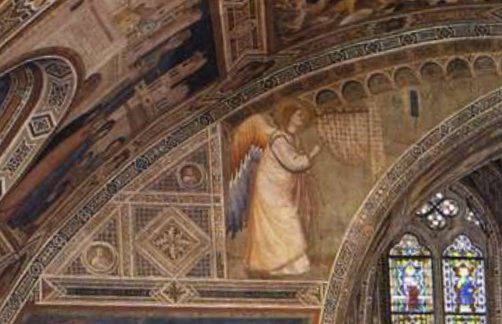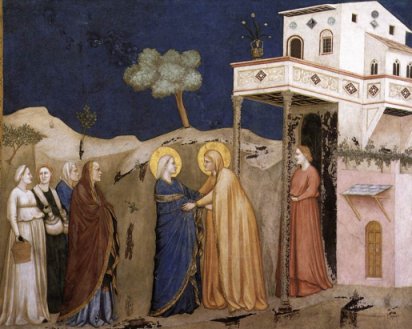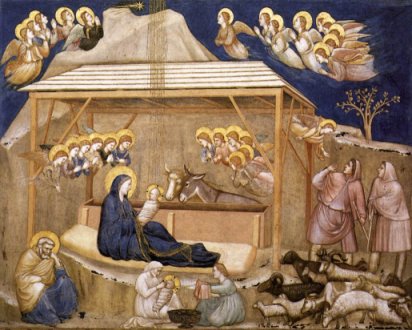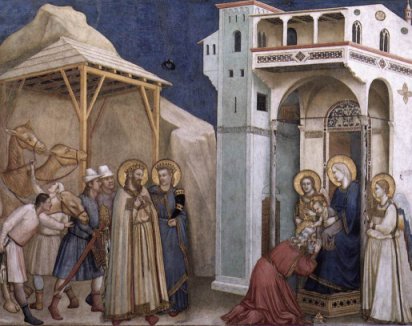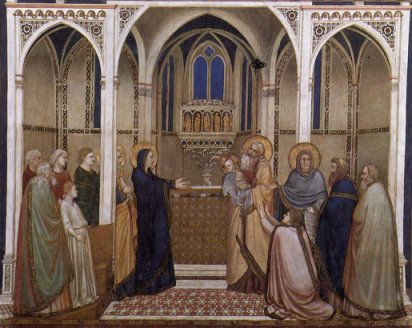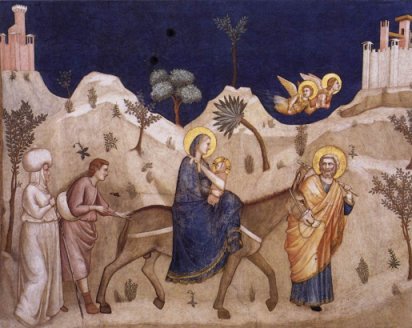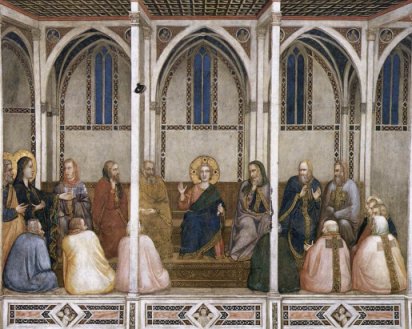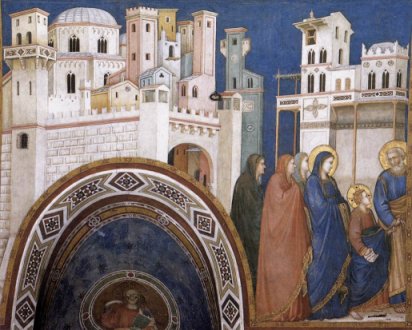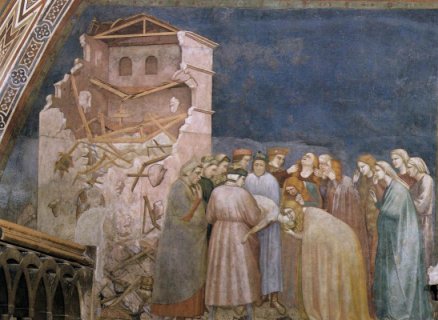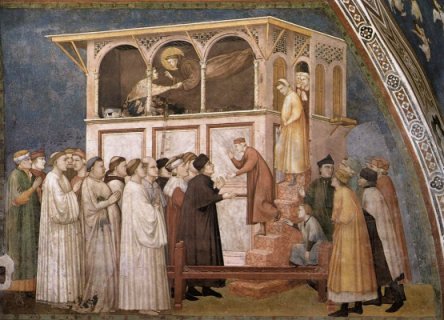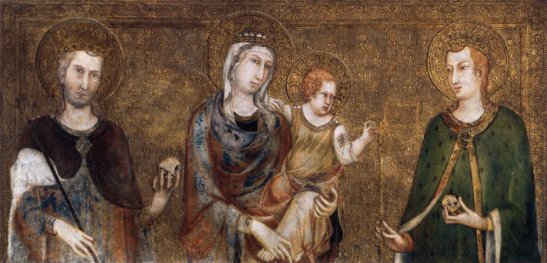|
San Francesco, Assisi - Lower Church |
|
|
North (Right) Transept |
|
|
|
|
|
The frescoes here are attributed to
some of the greatest names in Italian Gothic Art: Cimabue,
Lorenzetti, and Giotto, though the latter attribution is hedged around
with the usual 'workshop of', or 'Giottesque Masters' or even
'relatives of Giotto'! The scenes
in the vault show the events of the childhood of Christ, and this is
regarded as puzzling by some. The right hand side of a church is
seen as the most important, the most sacred, and yet here the most
important scenes - the Passion of Christ - are found in the left
transept. Two thoughts occur. As already mentioned, the east/west orientation of the church is also not what is expected. The other thought is that getting right/left correct suggests a preordained plan, while the work here seems far more piecemeal. |
|
|
|
|
|
|
|
|
Possibly the best-know fresco in
the entire church is the Maestą, the Madonna and Child in Majesty,
pretty solidly attributed to Cimabue. It raises one or two interesting
issues. |
|
|
|
|
|
|
|
| The crucifixion scene is clearly not part of the childhood sequence, but it does perhaps link the Maestą with the scenes from the life of St Francis that run around the transept on the second register. It is important to recognise that there were originally altars below the Maesta and the crucifixion: narrative paintings wouldn't do in this context, where something devotional was required. Note the adoring Franciscans in the crucifixion scene, once again on the right-hand side. Mary Magdalene is at the foot of the cross, and the entrance to her chapel is below and to her right. |
|
|
|
|
| Now let's have a look at the Scenes from the Incarnation and childhood of Christ, beginning with the Annunciation above the entrance to the San Nicola chapel. | |
|
|
|
|
|
|
|
|
|
|
|
|
|
|
|
Frescoes in the second register show Miracles of Saint Francis, involving the resuscitation of children who had died in a collapsing house or had fallen out of a window. They may have been chosen to reflect the burial in the chapel of San Nicola which they flank: Giovanni Gaetano, brother of Cardinal Napoleone Orsini Frangipane, who died at an early age following an accident. Presumably St. Francis was unable to help on that occasion. |
|
|
|
|
|
|
|
|
|
|
|
|
|
|
|
|
| This rather odd image of St. Francis is at the top of the stairs leading to the cloisters. Francis, showing his stigmata, seems to be welcoming death, shown as a crowned skeleton. Once more there is a powerful suggestion of Francis as a second Christ. Interestingly, its location is matched in the south transept with the fresco of the dead Judas. | |
|
|
|
| Below the Maesta is a fresco by Pietro Lorenzetti showing five holy friars; these are the five friars whose grave is behind the grille below. On the left is a portrait of Friar John of England, also buried here, beneath the Altar of St Elizabeth. (See below.) | |
|
|
|
| Altars There were two altars in the transept, both removed in the nineteenth century. In the corner beneath the Martini frescos was the Altar of Elizabeth of Hungary. The Altar of Santa Maria Immacalata was beneath the fresco of the holy friars. The stature of the Immaculate Virgin from here was moved to the chapel of San Pietro d'Alcantara in1860, where it remains. |
|
|
Back to San Francesco Lower Church page 1 Home page - explore the site |
|
